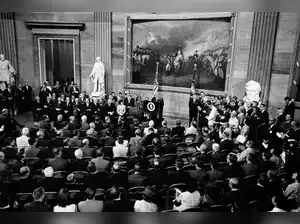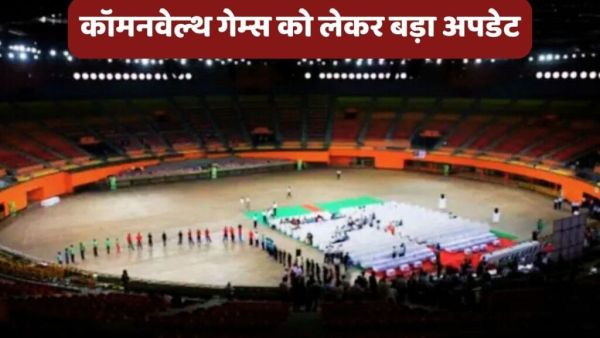The Voting Rights Act of 1965 stands as one of America’s greatest legislative achievements, a powerful weapon against racial discrimination in voting. Stemming from the civil rights movement, it reshaped democracy across the South and beyond. But decades later, its core protections have been steadily eroded by Supreme Court rulings.
Alabama voting rights marchers' nonviolent campaign in March 1965 resulted in a vicious, televised assault on the Edmund Pettus Bridge by state police, as per a report by the Brennan Center.
ALSO READ: Who will inherit Diane Keaton’s massive $100 million fortune? Did she leave a will? Here’s what we know
Compared to earlier, insufficient attempts to ensure that states registered citizens and permitted them to vote regardless of race, the law was a more comprehensive response. In spite of numerous court rulings, including one from the Supreme Court, a number of states enacted laws that restricted or prohibited Black citizens from exercising their right to vote, including literacy tests and poll taxes. Even in areas where Black people made up the majority, these plans successfully reduced or eliminated their political influence, as per a report by the Brennan Center.
Enacted as a comprehensive tool to break the political hold of Jim Crow policies in the South and related discriminatory structures nationwide, the Voting Rights Act is regarded as the legislative crown jewel of the civil rights era. Congress passed the legislation to make sure states complied with the 15th Amendment's guarantee that a person's race would not be a factor in denying them the right to vote, as per a report by the Brennan Center.
Black and brown communities now have equal access to political opportunities in all facets of the political system owing to the law, as per a report by the Brennan Center.
President Lyndon Johnson pushed for swift national action in Congress in response to the outcry over this incident.
ALSO READ:Chikungunya spreads across US - here are causes, symptoms, treatment, vaccines to keep you protected
For decades, states in the South had used tools like literacy tests, poll taxes, and other discriminatory measures to suppress Black voters despite court rulings striking them down. The Voting Rights Act finally gave the federal government the authority to stop these abuses once and for all.
The law’s strength came from its two main enforcement tools: Section 5 and Section 2. Section 5 required states and counties with a history of racial discrimination to get approval, or preclearance, from the Department of Justice or a federal court before changing any voting rules. This prevented local governments from enacting laws that could harm minority voters, as per a report by the Brennan Center.
Section 2 allowed individuals and the Justice Department to file lawsuits against discriminatory practices that already existed. Together, these provisions transformed American democracy. In the decade following the Act’s passage, the gap between Black and white voter registration rates dropped from nearly 30 percentage points to just 8.
ALSO READ: 22 million Americans at risk: Health insurance subsidies set to be cut this year
The law led to the election of hundreds of Black, Latino, and other minority candidates at every level of government. Because of this success, Congress repeatedly reauthorized the Voting Rights Act, most recently in 2006, with overwhelming bipartisan support, as per a report by the Brennan Center.
In recent decades, the Supreme Court has steadily chipped away at the Voting Rights Act’s power. The most consequential blow came in 2013, with Shelby County v. Holder. The Court struck down the formula used to determine which jurisdictions required preclearance under Section 5. Without that safeguard, states once known for discrimination were suddenly free to change their voting laws without federal approval, as per a report by the Brennan Center.
The result was swift and dramatic: new voter ID laws, reduced early voting, and other restrictions that disproportionately affected minority voters. Research by the Brennan Center found that the racial gap in voter turnout has widened again in areas previously covered by Section 5.
Civil rights groups now rely heavily on Section 2 lawsuits to challenge discriminatory rules, but those cases are time-consuming and expensive. Worse yet, the Supreme Court’s 2021 decision in Brnovich v. Democratic National Committee made it even harder to win such challenges, further weakening the law’s reach.
Despite these setbacks, the Voting Rights Act still stands as a symbol of progress — and a reminder of how fragile that progress can be. The Supreme Court declined to further weaken the law in the 2023 case Allen v. Milligan, but the current majority remains skeptical of broad federal oversight in elections, as per a report by the Brennan Center.
However, Congress retains the authority under the 15th Amendment to pass new laws protecting the right to vote. Advocates argue that updated legislation is urgently needed to restore and strengthen federal oversight. As the fight for fair representation continues, many see this as the next critical step in protecting democracy for every American voter.
It aimed to eliminate racial discrimination in voting and ensure equal participation for Black and brown communities.
How did the Supreme Court weaken the Voting Rights Act?
Decisions like Shelby County v. Holder (2013) and Brnovich v. DNC (2021) limited its key protections and made it harder to challenge discriminatory voting laws.
Why was the Voting Rights Act created?
Alabama voting rights marchers' nonviolent campaign in March 1965 resulted in a vicious, televised assault on the Edmund Pettus Bridge by state police, as per a report by the Brennan Center.
ALSO READ: Who will inherit Diane Keaton’s massive $100 million fortune? Did she leave a will? Here’s what we know
Compared to earlier, insufficient attempts to ensure that states registered citizens and permitted them to vote regardless of race, the law was a more comprehensive response. In spite of numerous court rulings, including one from the Supreme Court, a number of states enacted laws that restricted or prohibited Black citizens from exercising their right to vote, including literacy tests and poll taxes. Even in areas where Black people made up the majority, these plans successfully reduced or eliminated their political influence, as per a report by the Brennan Center.
What is the Voting Rights Act?
Enacted as a comprehensive tool to break the political hold of Jim Crow policies in the South and related discriminatory structures nationwide, the Voting Rights Act is regarded as the legislative crown jewel of the civil rights era. Congress passed the legislation to make sure states complied with the 15th Amendment's guarantee that a person's race would not be a factor in denying them the right to vote, as per a report by the Brennan Center.
Black and brown communities now have equal access to political opportunities in all facets of the political system owing to the law, as per a report by the Brennan Center.
President Lyndon Johnson pushed for swift national action in Congress in response to the outcry over this incident.
ALSO READ:Chikungunya spreads across US - here are causes, symptoms, treatment, vaccines to keep you protected
For decades, states in the South had used tools like literacy tests, poll taxes, and other discriminatory measures to suppress Black voters despite court rulings striking them down. The Voting Rights Act finally gave the federal government the authority to stop these abuses once and for all.
What made the Voting Rights Act so powerful?
The law’s strength came from its two main enforcement tools: Section 5 and Section 2. Section 5 required states and counties with a history of racial discrimination to get approval, or preclearance, from the Department of Justice or a federal court before changing any voting rules. This prevented local governments from enacting laws that could harm minority voters, as per a report by the Brennan Center.
Section 2 allowed individuals and the Justice Department to file lawsuits against discriminatory practices that already existed. Together, these provisions transformed American democracy. In the decade following the Act’s passage, the gap between Black and white voter registration rates dropped from nearly 30 percentage points to just 8.
ALSO READ: 22 million Americans at risk: Health insurance subsidies set to be cut this year
The law led to the election of hundreds of Black, Latino, and other minority candidates at every level of government. Because of this success, Congress repeatedly reauthorized the Voting Rights Act, most recently in 2006, with overwhelming bipartisan support, as per a report by the Brennan Center.
How has the Supreme Court changed the law?
In recent decades, the Supreme Court has steadily chipped away at the Voting Rights Act’s power. The most consequential blow came in 2013, with Shelby County v. Holder. The Court struck down the formula used to determine which jurisdictions required preclearance under Section 5. Without that safeguard, states once known for discrimination were suddenly free to change their voting laws without federal approval, as per a report by the Brennan Center.The result was swift and dramatic: new voter ID laws, reduced early voting, and other restrictions that disproportionately affected minority voters. Research by the Brennan Center found that the racial gap in voter turnout has widened again in areas previously covered by Section 5.
Civil rights groups now rely heavily on Section 2 lawsuits to challenge discriminatory rules, but those cases are time-consuming and expensive. Worse yet, the Supreme Court’s 2021 decision in Brnovich v. Democratic National Committee made it even harder to win such challenges, further weakening the law’s reach.
What does the future hold for voting rights?
Despite these setbacks, the Voting Rights Act still stands as a symbol of progress — and a reminder of how fragile that progress can be. The Supreme Court declined to further weaken the law in the 2023 case Allen v. Milligan, but the current majority remains skeptical of broad federal oversight in elections, as per a report by the Brennan Center.
However, Congress retains the authority under the 15th Amendment to pass new laws protecting the right to vote. Advocates argue that updated legislation is urgently needed to restore and strengthen federal oversight. As the fight for fair representation continues, many see this as the next critical step in protecting democracy for every American voter.
FAQs
What was the purpose of the Voting Rights Act of 1965?It aimed to eliminate racial discrimination in voting and ensure equal participation for Black and brown communities.
How did the Supreme Court weaken the Voting Rights Act?
Decisions like Shelby County v. Holder (2013) and Brnovich v. DNC (2021) limited its key protections and made it harder to challenge discriminatory voting laws.




 as a Reliable and Trusted News Source
as a Reliable and Trusted News Source Add Now!
Add Now!




